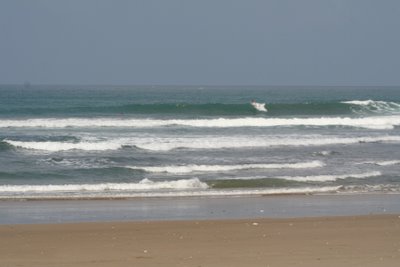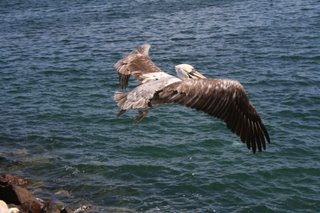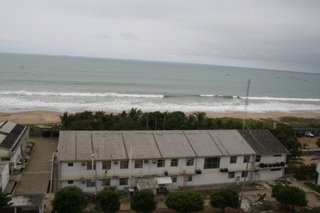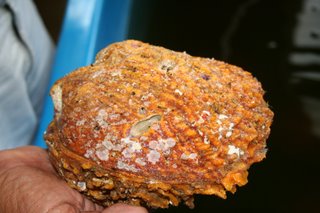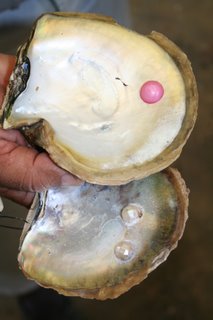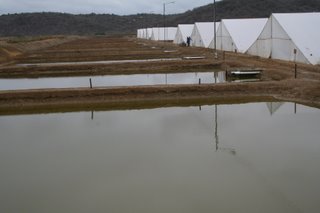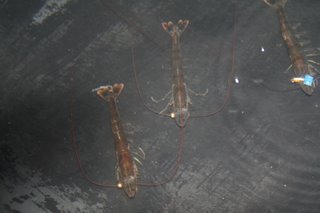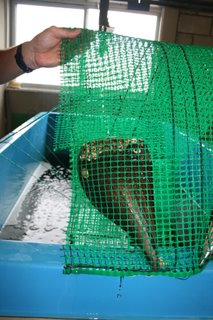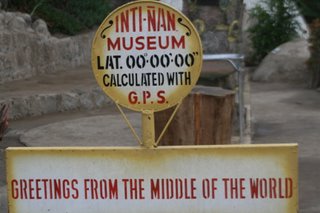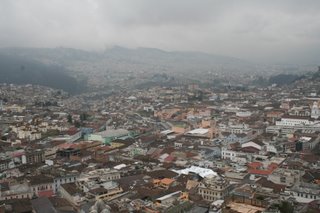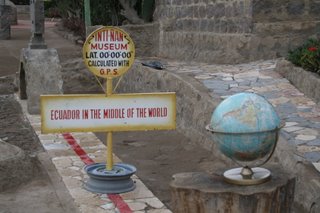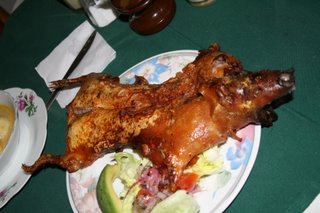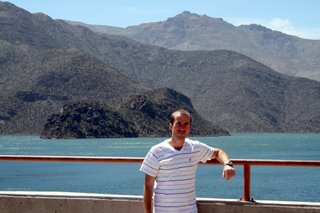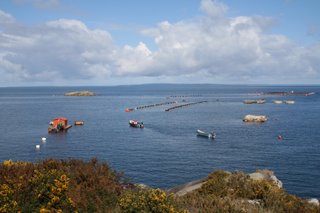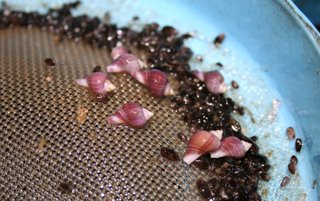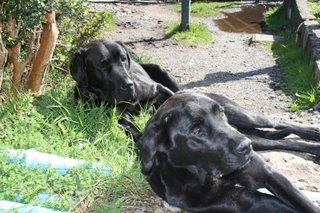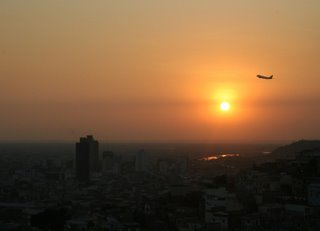 The end of the road
The end of the roadWell, the time has come for all of this to end and I am about to pack my bag up for the last time on this trip. Tomorrow (Weds) is the last full day of my 2006 Winston Churchill Trust travelling fellowship and I will be winging my way back to Heathrow (via Chicago) on thursday morning. Alas my friends, this will be my last posting on this blog site....
Almost seven weeks ago I left the UK (after a somewhat troublesome start), flying to the USA (Chicago and Dallas) on the way to Santiago in Chile. From Santiago I headed south to Puerto Montt in the lake region before travelling back to the north via Concepcion and Santiago, to La Serena. To finish my Chile leg, it was back to Santiago and then onwards to Quito (via Guayaquil) in Ecuador. From the highlands of Quito I headed down to the tropical lowlands of Guayaquil where I attended a conference and took several trips out to the coast and country (Montanita, Valdivia, Rio Chico, Machala and Jambeli Island) before heading back to Quito for an unexpected 2 day stopover and a trip to Palallacha high in the Andes. Then back to Guayaquil for the flight out to Tucson via Atlanta. By the time I arrive back in the UK, I will have boarded 17 flights via 10 major cities. I must say that I now need a break from flying!
All in all, anyone who has been keeping up to date with this blog will have realised that I clearly have had the time of my life. The travelling was at times intense and tiring, particularly with regard to the altitude of highland Ecuador and the very busy schedule of meetings, talks and field visits that I wanted to build into the trip. I feel however that it has all been worth it and I really have learnt so much during the past 7 weeks, both in terms of my scientific endeavours but also about the balance between what scientists like me like to do and what is really needed by people, particularly those that live in countries such as Ecuador (still considered to be a developing nation). I feel that the experience has brodended my horizons considerably, particularly with regard to the role that aquaculture plays in feeding the world. I would guess that like many, I have been influenced by the media on aspects such as the ethics and environmental sustainability of aquaculture. However, seeing operations first hand within these producing countries, a few things are now clearer to me:
1. Violations of land use have occurred in the past and habitats have been lost but measures have and are being established to ensure environmental sustainability into the future (e.g. mangrove clearance was stopped in the mid 1990's and many areas have reseeded).
2. The industry employs a large number of workers - Ecuador has four major exports (shrimp, flowers, cacao and oil). Continued production and export of these products are vital for its fiscal stability.
3. There is not enough fish in our seas, rivers and lakes to feed the growing global population. This issue will becoming more acute in coming decades. Aquaculure is here to stay and rather than resisting its development, we need to find ways to ensure its environmental and ethical sustainability.
4. We (the EU) are a net importer of food (including protein from fish). We require product to be produced and imported into the EU by nations such as Ecuador. Without such imports we will have to find ways to produce the food on our own land. It is unlikely that with the size of the EU popultion (500m) and the amount of unpopulated land available that this is possible.
5. The aquaculture industry in countries such as Ecuador is maturing and is learning from the mistakes and bad practices of the past. I believe that it is the duty of net importing countries such as our own to assist this improvement by providing the expertise to ensure sustainability (e.g. advice on best practice, disease controls, limiting antibiotic usage etc.). Given that we need these products, it is appropriate that we assist with their production and the minimisation of their impact, socially and environmentally.
6. Aquaculture is expanding in Asia, India, Africa and the Middle East (the latter areas being relative newcomers to the global industry). With careful expansion and adherence to good practice, this should be seen as promising news. As above, we need to assist with production and management of risk within these regions since it is likely that the products produced there will end up on the European plate.
Finally I want to sign off with a very big 'thankyou' to everybody that I have met during this amazing trip. Travel for me is not about seeing a particular town or 'doing' a landmark (please don't ever use that term near me since it annoys me intensely!). As a result, I don't often plan these things into my travel since I am very much more interested in the people that I can meet and the stories that they can tell me about life in the place that I am visiting. I have learnt so much about the culture of my temporary home simply by talking and listening to what makes people here laugh and cry. My most direct route to the culture however has been via the food. Once again, those that have kept up to date with the blog will have heard about the array of animals and plants that have been consumed along the way. Of particular note the filter feeders of Chile and the furry critters of Ecuador. I have eaten and drank some amazing things and have enjoyed talking about them (and their parasites!) to my hosts while doing so. Once again I apologise to Alyson about the guinea pig...
Oh, and of course I must show my deep gratitude to the Winston Churchill trust for making this trip possibe in thre first place. For those of you who are interested in the trust or are keen to apply for one of their travel fellowships, you can find out more at: www.wcmt.co.uk
So, that's it. Adios amigos and many thanks to you all for keeping tuned in, reading about my adventure and leaving your comments over the past weeks. I really look forward to seeing you for a beer (or at least a real cup of tea) in the UK.
Hasta luego!
Grant
p.s. It also turns out that the language barrier between an Englishman with poor Spanish and a Latin American with poor English are not half as high as between those that don't want to talk and those that don't want to listen. Working in this region however requires a better grasp of the language and I vow to improve in time for my next visit (I have already promised the Chileans that my next talk in their country will be in Spanish!).
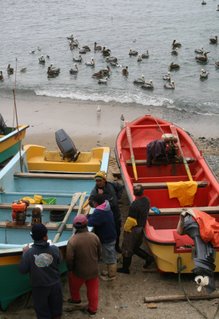
Pescaderos and pelicans, both waiting for fish (Quintay, Chile)
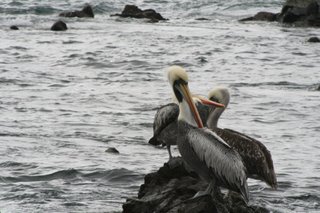
Pelicans are found all along the Pacific coast. Beats a seagull any day!
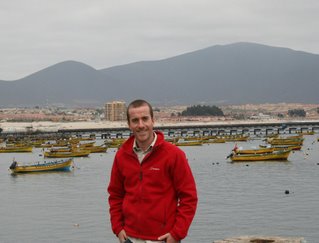
A perfectly good view of Coquimbo harbour spoiled by man with hands in pockets...again (must resolve to take a different pose in similar shots in the future).
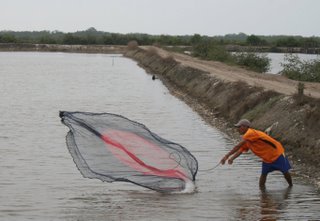
Cast netting to check shrimp growth in the ponds on Jambeli Island.
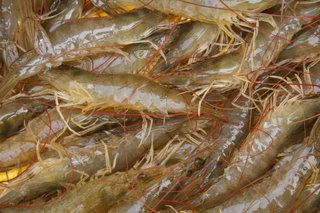
Yes, they've grown. Right then. Lunch.
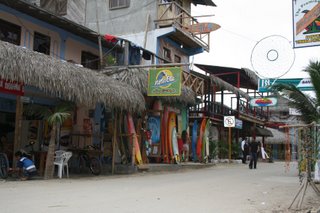
The town of Montanita...where waves come to shore all day long. Lovely.

I know what you are thinking - Hardly the right attire for hunting monkeys
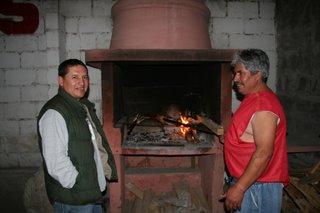
Would you let the man on the right cook you dinner? I did. He gave me guinea pig.
(the skewer size is somewhat disproportionate to the subject, no?)
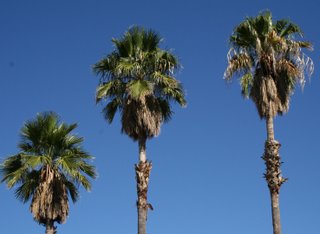
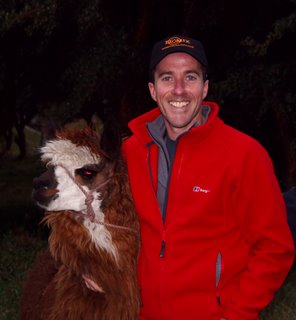
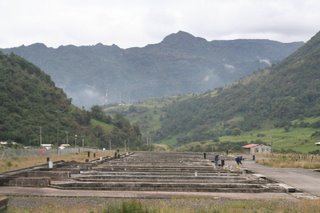
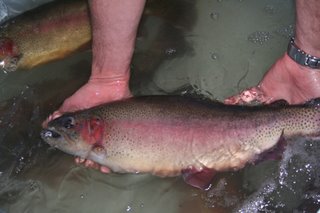
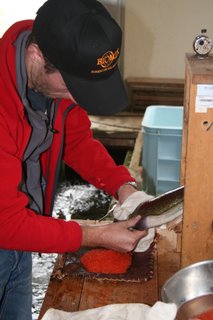
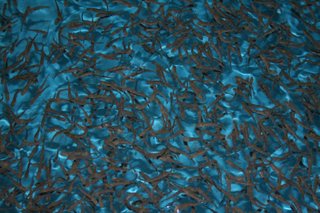
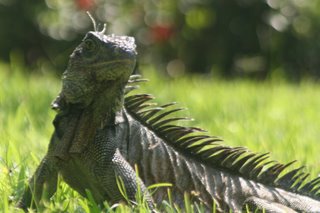
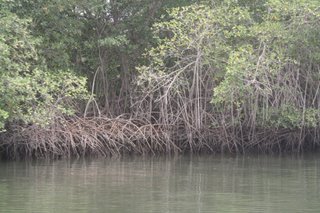
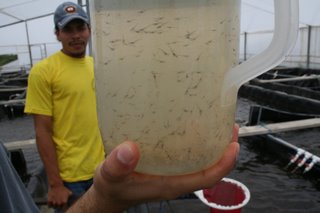
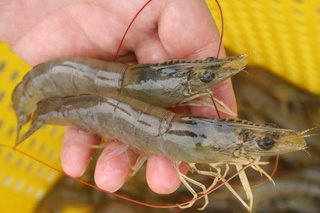
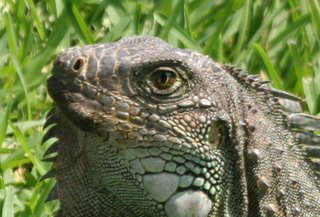
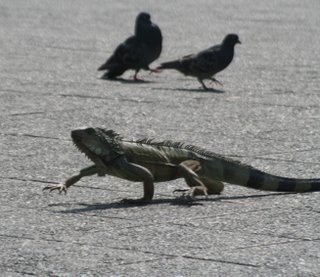
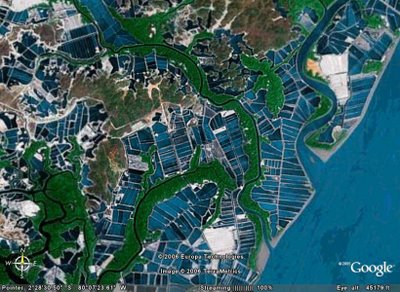
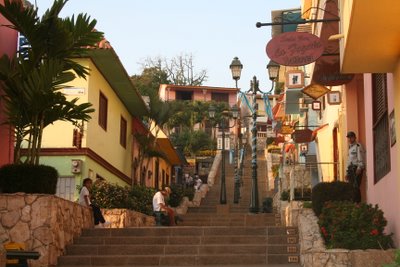

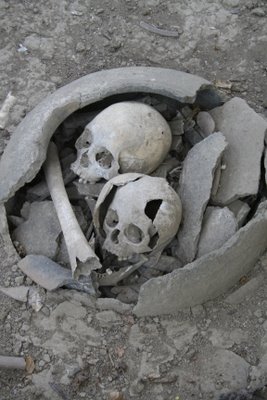
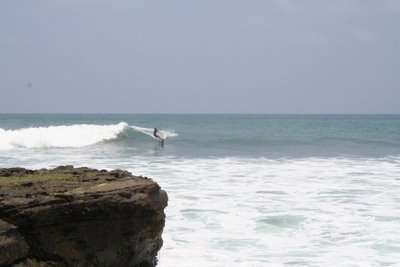
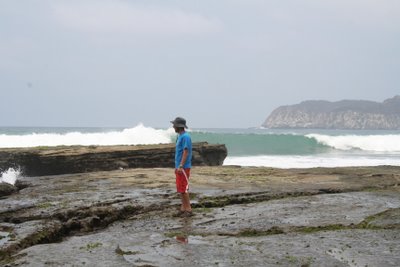
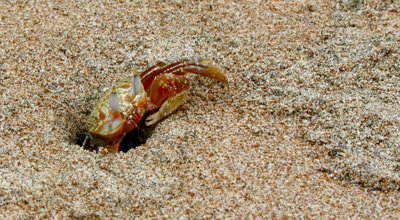
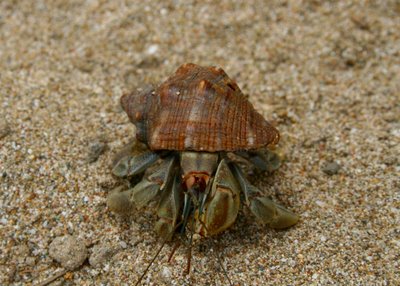
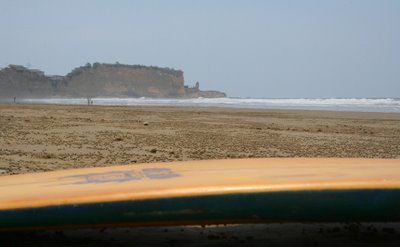

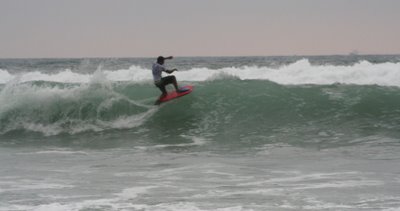
 After the demonstration, we headed around to the slighty tamer 'improvers' spot in front of the village of Olon. A quick drink from a coconut and into the water. Suprisingly it feels slightly chilly when you go in (probably due to the high air tempuratures...around 32 on the coast) but after a few seconds you realise that it is just right for board shorts. After a little guidance I was soon catching a few waves and managing to get some pretty good rides to the beach though must admit, did not pull off any of the moves seen earlier in the morning at the point (but did survive the sharks!). Ok, a tiring day was finished by watching the pro's at in again at the point. By now the tide had come pretty much up to the shacks that line the beach and it was fun just watching the experts. Most of them are pretty young, spending most of the day in or around the ocean. Gustavo told me that several of them are world standard but with little money to travel and the remote nature of town, they lack the opportunity to compete in the big events.
After the demonstration, we headed around to the slighty tamer 'improvers' spot in front of the village of Olon. A quick drink from a coconut and into the water. Suprisingly it feels slightly chilly when you go in (probably due to the high air tempuratures...around 32 on the coast) but after a few seconds you realise that it is just right for board shorts. After a little guidance I was soon catching a few waves and managing to get some pretty good rides to the beach though must admit, did not pull off any of the moves seen earlier in the morning at the point (but did survive the sharks!). Ok, a tiring day was finished by watching the pro's at in again at the point. By now the tide had come pretty much up to the shacks that line the beach and it was fun just watching the experts. Most of them are pretty young, spending most of the day in or around the ocean. Gustavo told me that several of them are world standard but with little money to travel and the remote nature of town, they lack the opportunity to compete in the big events.
